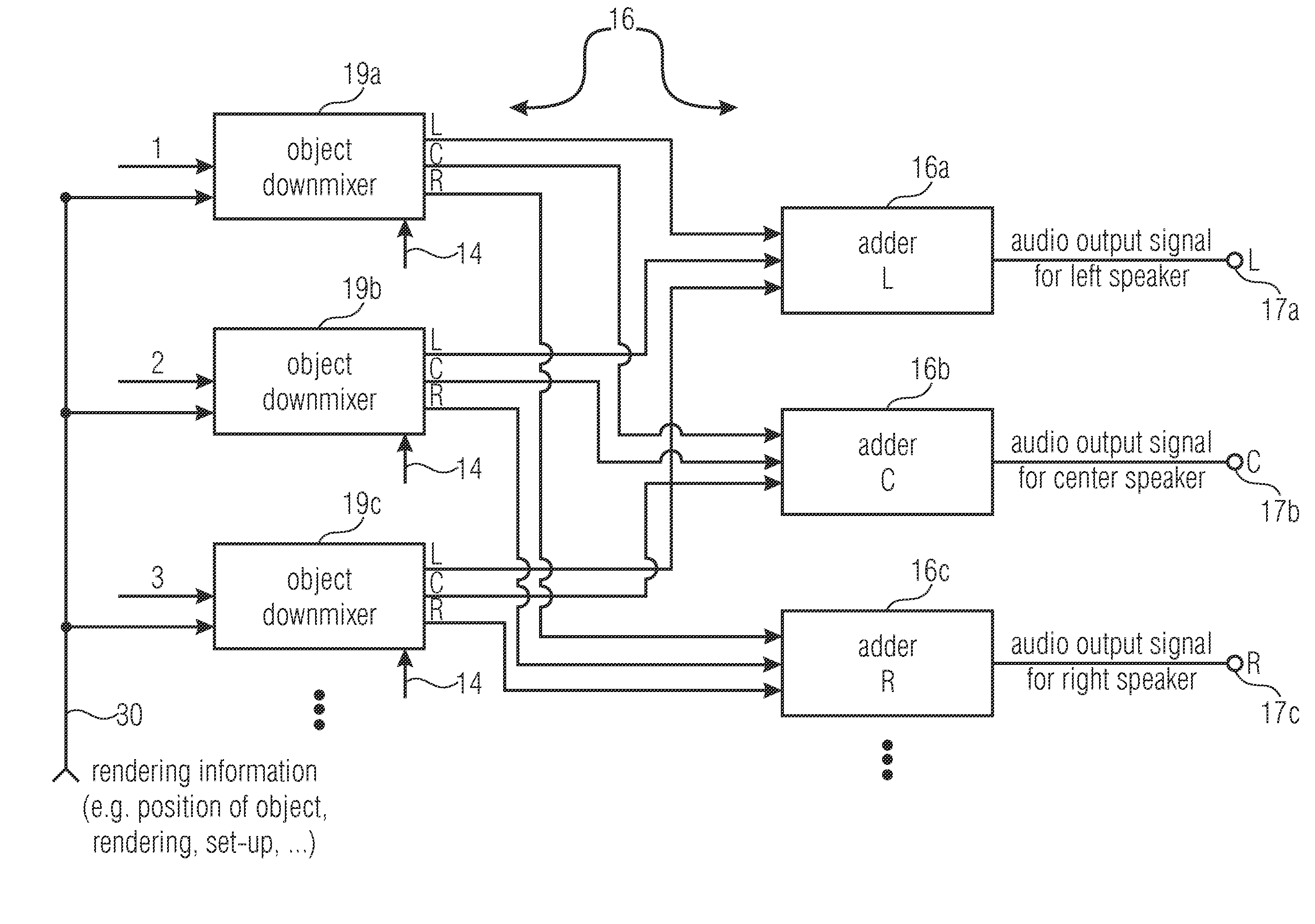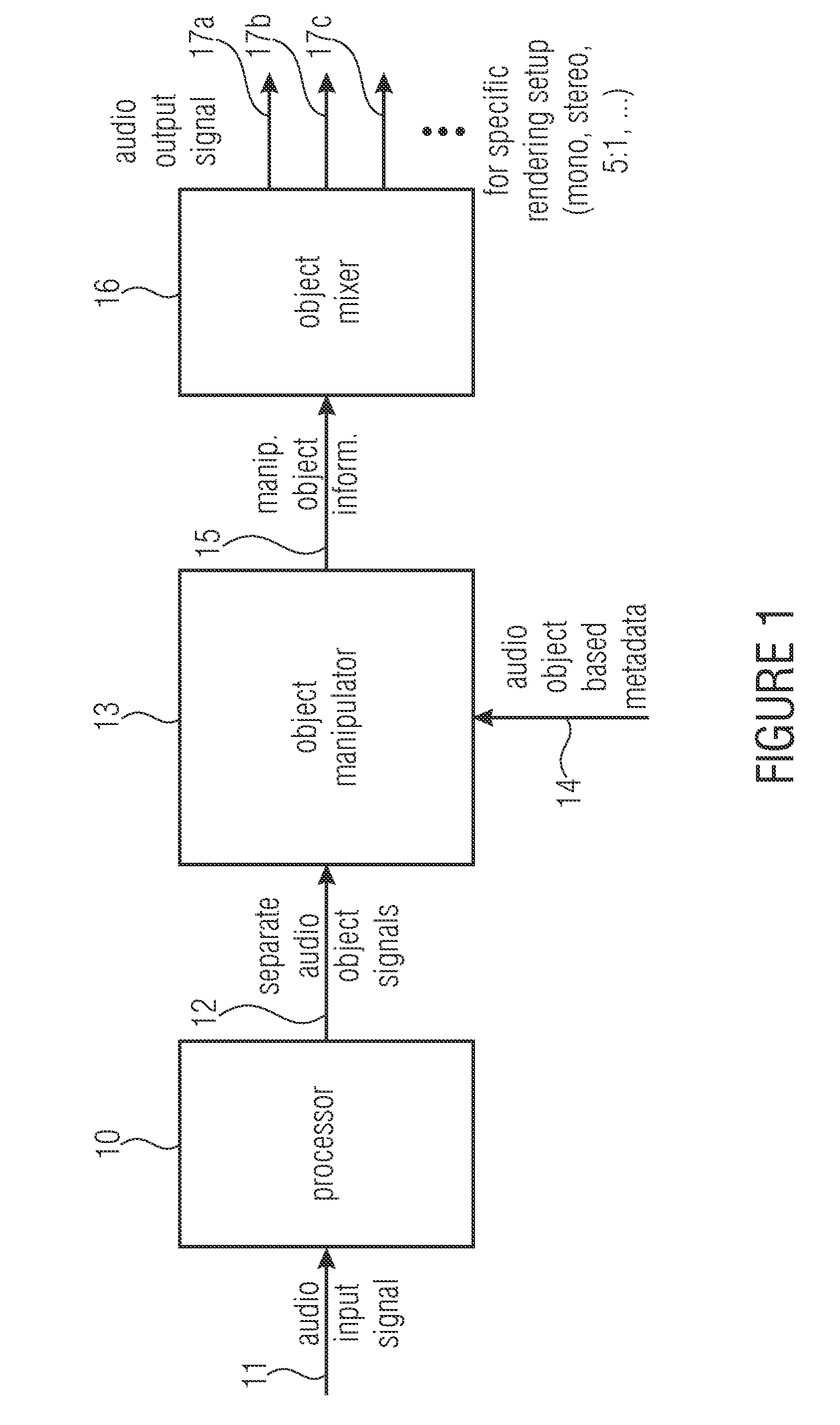Apparatus and method for generating audio output signals using object based metadata
a technology of object-based metadata and audio output, applied in the field of audio processing, can solve problems such as broadcasters' inability to adopt and separate each audio object inside this audio stream, and problems on traditional reproduction systems
- Summary
- Abstract
- Description
- Claims
- Application Information
AI Technical Summary
Problems solved by technology
Method used
Image
Examples
Embodiment Construction
[0044]To face the above mentioned problems, a preferred approach is to provide appropriate metadata along with those audio tracks. Such metadata may consist of information to control the following three factors (the three “classical” D's):
[0045]dialog normalization[0046]dynamic range control[0047]downmix
[0048]Such Audio metadata helps the receiver to manipulate the received audio signal based on the adjustments performed by a listener. To distinguish this kind of audio metadata from others (e.g. descriptive metadata like Author, Title, . . . ), it is usually referred to as “Dolby Metadata” (because they are yet only implemented by Dolby). Subsequently, only this kind of Audio metadata is considered and is simply called metadata.
[0049]Audio metadata is additional control information that is carried along with the audio program and has essential information about the audio to a receiver. Metadata provides many important functions including dynamic range control for less-than-ideal lis...
PUM
 Login to View More
Login to View More Abstract
Description
Claims
Application Information
 Login to View More
Login to View More - R&D
- Intellectual Property
- Life Sciences
- Materials
- Tech Scout
- Unparalleled Data Quality
- Higher Quality Content
- 60% Fewer Hallucinations
Browse by: Latest US Patents, China's latest patents, Technical Efficacy Thesaurus, Application Domain, Technology Topic, Popular Technical Reports.
© 2025 PatSnap. All rights reserved.Legal|Privacy policy|Modern Slavery Act Transparency Statement|Sitemap|About US| Contact US: help@patsnap.com



